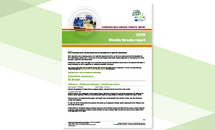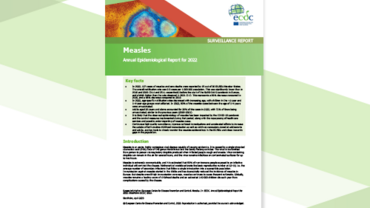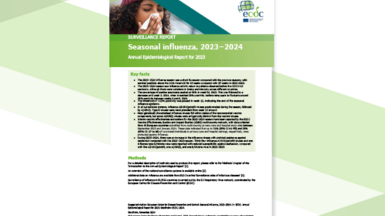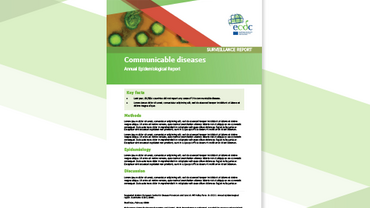Communicable disease threats report, 19 - 25 May 2013, week 21
The ECDC communicable disease threats report is a weekly bulletin intended for epidemiologists and health professionals in the area of communicable disease prevention and control. Summarising information gathered by ECDC through its epidemic intelligence activities regarding communicable disease threats of concern to the European Union, it also provides updates on the global situation and changes in the epidemiology of communicable diseases with potential to affect Europe, including diseases that are the focus of eradication efforts.
Executive Summary
An outbreak of hepatitis A (HAV) involving German, Polish and Dutch travellers returning from northern Italy was reported. Italian authorities also reported an increase in HAV cases in 2013 at the national level and in the implicated area. The source of the outbreak has not yet been identified but preliminary investigations point to frozen berries as the vehicle of infection.
In another HAV outbreak, Denmark, Finland, Norway and Sweden reported HAV cases between 1 October 2012 and 23 May 2013. During the week leading up to 23 May 2013, four new cases and eight previously reported cases were found associated with the unique outbreak strains. This brings the number of cases associated with the outbreak to 89, of which 42 are confirmed. The source of the outbreak has not been identified but investigations in Denmark and Sweden point towards frozen strawberries as the vehicle of infection.
From November 2012 to May 2013, several EU Member States reported hepatitis A virus infections affecting travellers returning from Egypt. The identification of the same HAV sequence in 18 cases from three of the affected countries confirms a multinational outbreak. The source of the outbreak is still unknown but the descriptive epidemiology suggests a possible persistent common source of infection in Egypt. As of 23 May 2013, 20 confirmed HAV cases have been reported from six countries. Travellers should be aware of the importance of HAV vaccination before travelling to HAV endemic areas.
Between April 2012 and 23 May 2013, 44 laboratory-confirmed cases, including 22 deaths, of an acute respiratory disease caused by a novel coronavirus, now called Middle East respiratory syndrome coronavirus (MERS-CoV)have been notified to the World Health Organization. Between 16 and 23 May 2013, the Ministry of Health in Saudi Arabia reported two new cases, one in Al-Hasa governorate and one from Al-Qaseem.
On 21 May 2013, three cases were reported by the Ministry of Health of Tunisia. The probable index patient, who died on 10 May 2013, was a 66-year-old man with underlying health conditions and a recent travel history to Qatar and Saudi Arabia. Infection with MERS-CoV was not confirmed. The two laboratory-confirmed cases, a 34-year-old man and a 35-year-old woman, are children of the index case. Both showed mild respiratory illness, but neither one required hospitalisation.
ECDC continues to monitor information on the situation of MERS-CoV worldwide. In the light of these new developments, the recommendations given in the updated ECDC Rapid Risk Assessment are still valid.
Following the low influenza intensity transmission across the reporting European countries for the fourth consecutive week, weeks 19 and 20 mark the end of the influenza season 2012-2013 in Europe, as concluded in ECDC’s Fortnightly Influenza Surveillance Overview for weeks 19-20.
Download








